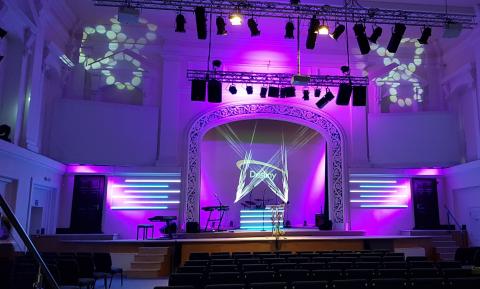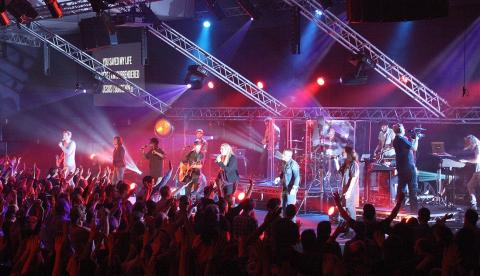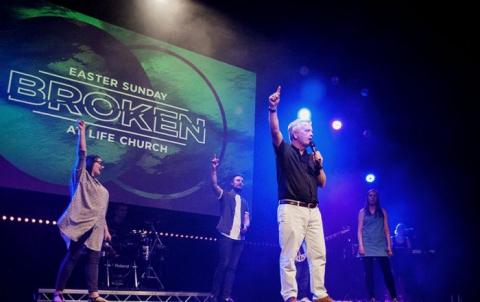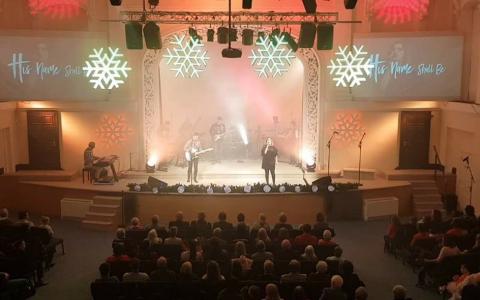Light Shows & Concerts: Old Wine in New Skins

Charismatic worship has much in common with pre-Reformation, Catholic worship. At first glance, this is a ludicrous claim. Dig beneath the surface and you find the same inner core. Before I attempt to demonstrate this claim, allow me to clarify my terms. I’m not having a pop at classical Pentecostals whom I respect, nor individuals who enjoy this style of Christianity. By charismatic, I refer to the large, super-churches found in this nation, in towns such as Burnley, Bradford and Wakefield. They have impressive, professional-sounding worship groups which perform on stages, complete with light shows and special effects. So what have they in common with the old Catholic parish churches?

1) A feast for the senses. It’s a banquet for the eyes and a pleasure for the ears. Medieval Catholics would have enjoyed the familiar sounds of the Latin Mass without understanding its meaning. The smell of incense, the gorgeous colours of the priest’s vestments and the drama and ritual of elevating the host all made the Sunday service a piece of theatre. Likewise, charismatic worship pleases the senses with its special lighting and dramatic effects, but it often fails to satisfy the mind, the renewal of which is the gospel’s objective.
2) The primacy of music. Music is become more important than preaching. Impressive sounding musicians serenade the congregation- or should I say audience- with as good a quality sound as ever you’ll hear at a secular concert. Singers face out to the audience, heavily amplified, so that audience participation, though encouraged, is barely heard. Similarly, the medieval Catholic would have enjoyed the choir’s descants, perhaps humming along to the familiar tunes, but his or her participation was purely optional.
3) The mediocrity of preaching. The preaching itself in medieval churches was minimal, if it happened at all. Friars preached more regularly than parish clergy, but their sermons were more condemnations of sinful living than explanations of biblical truth. Preaching in large charismatic churches is chiefly now concerned with living a successful life or fulfilling one’s dreams and ambitions. The cross has become a footnote, and the empty tomb a mere symbol of feeling better about life’s unpleasant realities.
4) A love of money. Whereas some Catholic clergy were poorly remunerated, and others made vows of poverty, a great many made a fine living from religion. The charismatic gospel of health and wealth has made a few pastors and teachers surprisingly wealthy; the pastor in his Mercedes and designer footwear is an assurance to the financial givers that God is truly blessing that ministry.

One might then ask- so what? What if the two are similar? The pre-Reformation church in Europe was a counterfeit version of Christianity. Whereas I believe it had real Christians uncomfortably sitting in its branches, so large charismatic churches have a great many genuine believers in them. At the Reformation, God called His chosen people to leave Babylon- and His calls continue today. We must attend fellowships where the Bible is preached, God is glorified and where are able to serve. From such places where self is promoted, wealth is desired and the senses gratified, it’s time to come home to Zion.
Therefore the redeemed of the LORD shall return, and come with singing unto Zion; and everlasting joy shall be upon their head: they shall obtain gladness and joy; and sorrow and mourning shall flee away.
Isaiah 51:11

Images: Facebook
- Log in to post comments


 Sunday Worship 10.45am & 6.00pm
Sunday Worship 10.45am & 6.00pm